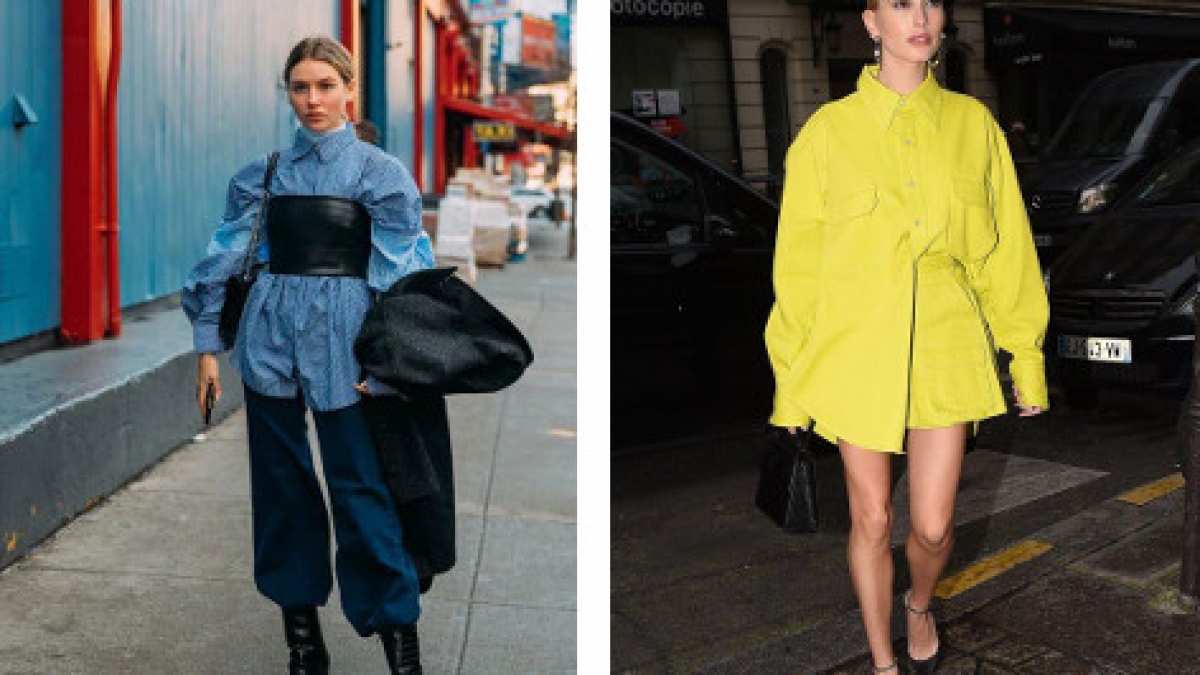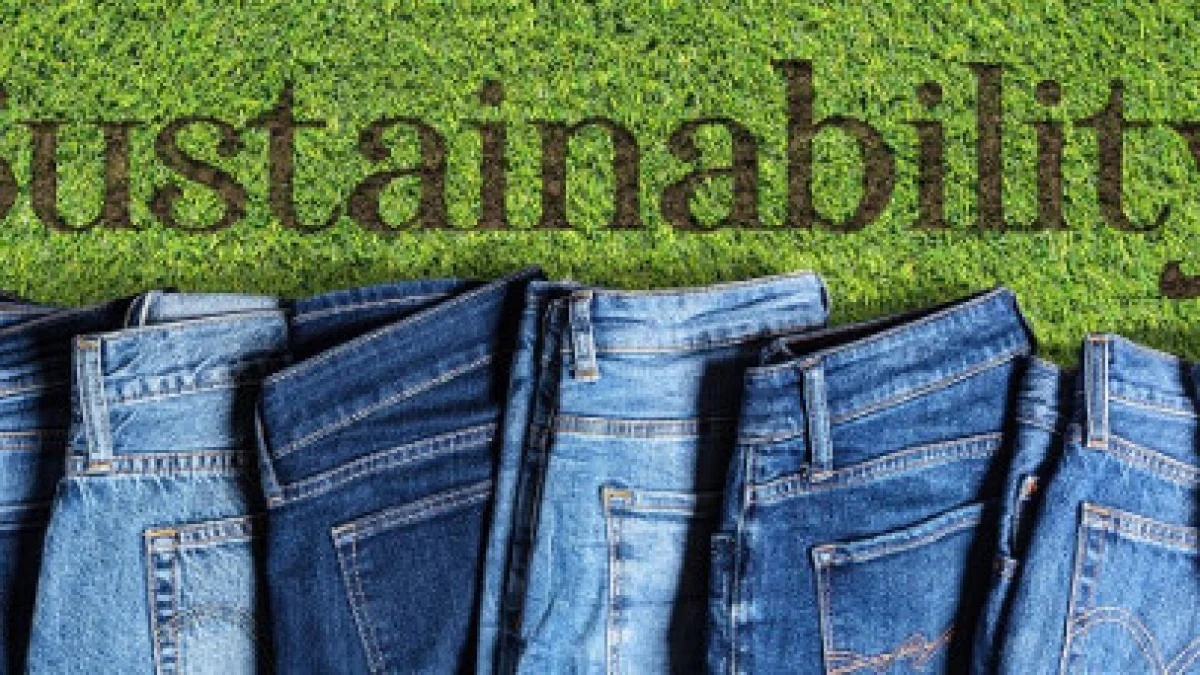Fashion Forecast: Unveiling the Hottest Trends for Spring, Summer, Autumn, and Winter 2024
As the seasons shift and the days grow longer or shorter, so too does our wardrobe. But with so many trends emerging from the runways, keeping up with what's hot can feel overwhelming. Fear not, fashionistas! This comprehensive guide will unveil the hottest trends for Spring, Summer, Autumn, and Winter 2024, ensuring you stay stylish throughout the year.
Denim Dilemma: Can Sustainability and Style Coexist?
Denim. It's a wardrobe staple, a symbol of rebellion, and a fabric woven into the history of fashion. But denim's iconic status comes with a hidden cost: its environmental impact. So, can we reconcile our love for denim with the growing need for sustainable fashion practices? Let's dive into the world of denim, exploring its environmental footprint and the innovative solutions emerging for a more sustainable future. Denim Dilemma: Can Sustainability and Style Coexist? Denim. It's a wardrobe staple, a symbol of rebellion, and a fabric woven into the history of fashion. But denim's iconic status comes with a hidden cost: its environmental impact. So, can we reconcile our love for denim with the growing need for sustainable fashion practices? Let's dive into the world of denim, exploring its environmental footprint and the innovative solutions emerging for a more sustainable future. The Dark Side of Denim Denim production is a resource-intensive process. Here's a breakdown of its environmental toll: • Water Woes: Denim production requires vast amounts of water. Estimates suggest it takes around 1,500 litres of water to produce just one pair of jeans! This excessive water usage puts a strain on freshwater resources, particularly in areas already facing water scarcity. • Chemical Cocktail: The indigo dye traditionally used in denim production involves harsh chemicals like ammonia and sodium hydrosulfite. These chemicals can pollute waterways and harm workers in denim manufacturing facilities. • Energy Drain: Cotton, the primary fibre in denim, requires significant energy for processing and transportation. Additionally, traditional denim finishing techniques often involve energy-intensive processes. The Greener Side of Denim The fashion industry is waking up to the need for change. Here are some encouraging developments in sustainable denim production: • Organic Cotton: Organic cotton cultivation uses fewer pesticides and fertilizers, reducing environmental pollution. While organic cotton prices may be slightly higher, it offers a more sustainable alternative. • Water-saving Techniques: Innovative methods like laser finishing and ozone bleaching are reducing water consumption significantly. These techniques offer environmentally friendly alternatives to traditional denim processing. • Recycled Materials: Recycled cotton and post-consumer waste are being incorporated into denim production. This reduces the reliance on virgin cotton and helps divert textile waste from landfills. • Closed-Loop Manufacturing: This concept aims to create a closed loop for denim production. Worn-out jeans are collected, broken down, and reused to create new denim, minimizing waste and resource consumption. Denim, often hailed as a fabric with an eternal appeal, continues to transcend age, culture, and socioeconomic status. Despite its old origins, denim remains eternally youthful, constantly reinventing itself to suit modern sensibilities. However, alongside its enduring popularity, there has been a significant shift towards sustainability within the denim industry. Today, sustainability encompasses not only environmental concerns but also social, cultural, and economic aspects. Rainwater sustains most of the Brazilian cotton cultivation, highlighting the industry's commitment to eco-friendly practices. Moreover, a significant percentage of Brazilian cotton production holds socio-environmental certifications, underscoring the industry's dedication to transparency and ethical standards. Beyond the Fabric: Ethical Considerations Sustainability goes beyond environmental impact; it encompasses ethical labour practices. Here's what to consider: • Fair Trade Certification: Look for Fair Trade certified denim brands that ensure fair wages and safe working conditions for garment workers. • Transparency in Supply Chains: Brands that demonstrate transparency in their sourcing practices are more likely to be committed to ethical production. Making Sustainable Denim Choices Now that you understand the environmental and ethical considerations, here are some tips for embracing sustainable denim: • Invest in Quality: Buy a well-made pair of jeans from a sustainable brand and consider them an investment. Opt for classic styles that will be relevant for years to come. • Embrace Second-Hand: Thrift stores and vintage shops are treasure troves of unique denim finds. Giving pre-loved jeans a new life is a sustainable and stylish choice. • Extend the Life of Your Denim: Proper care extends the lifespan of your jeans. Wash them less often, air-dry whenever possible, and practice simple repairs to keep them looking their best. • Sustainability in Denim Production and Consumer Expectations: In response to growing consumer awareness, brands are increasingly adopting sustainable practices in denim production. Circular production methods, waterless dye processes, and laser technology are revolutionizing denim manufacturing, minimizing environmental impact while maximizing efficiency. Additionally, biodegradable denim sets new standards for sustainability, offering eco-friendly alternatives to traditional denim fabrics. Consumer demand for transparency and ethical sourcing is reshaping the denim industry, driving brands to prioritize sustainability and accountability. As consumers become more discerning, brands must adapt to meet evolving expectations, paving the way for a more sustainable and ethical future. Initiatives by the Company ‘Happy 2r’ The roadmap outlines different initiatives the clothing company is taking to become more sustainable. The roadmap is divided into six sections, each focusing on a different initiative. The first section is titled “Responsible procurement of raw material.” It states that the company uses recycled polyester and Lycra® brand products in the EcoMade family, which are made with recycled resources. The second section is titled “Recycled Polyester.” It states that the company uses recycled polyester, a performance fibre made from recycled post-consumer waste. The company uses REPREVE® which is a brand of recycled fibre made from plastic bottles. Happy 2r also uses sustainable technologies such as Creora® PowerFit to reduce water usage in denim production. “100% Organic Cotton” is used and is grown without harmful pesticides or fertilizers. Figure. Sustainability Roadmap of Happy 2r Beyond Denim: Sustainable Alternatives While denim holds a special place in our hearts, there are other sustainable alternatives for casual wear: • Hemp: This versatile plant is known for its rapid growth and minimal environmental impact. Hemp fabric is durable, breathable, and offers a similar look and feel to denim. • Tencel: This lyocell fibre is derived from wood pulp and uses a closed-loop production system, minimizing water waste. Tencel offers a soft, comfortable, and sustainable alternative to denim. • Organic Linen: Linen is a natural fibre known for its breathability and durability. Organic linen production is less water-intensive compared to cotton, making it a more sustainable choice. The Future of Denim Despite progress, the denim industry still faces significant challenges, including intense water consumption, toxic chemical usage, and worker exploitation. Sustainable solutions such as organic and recycled cotton offer promising avenues for reducing environmental impact and promoting ethical practices. Innovative fibres and functional finishes demonstrate the industry's commitment to innovation and sustainability, paving the way for an eco-friendlier denim future. However, addressing these challenges requires collaboration and collective action from all stakeholders, including brands, manufacturers, and consumers. The denim industry is at a crossroads. But with growing consumer awareness and innovative solutions, a more sustainable future for denim is possible. By making informed choices and supporting sustainable brands, we can continue to enjoy this iconic fabric while minimizing our environmental impact. Remember: Sustainable fashion is not just about buying eco-friendly clothes; it's about a change in mindset. It's about valuing quality over quantity, extending the life of our clothes, and supporting brands that prioritize ethical and sustainable practices. So, the next time you reach for a pair of jeans, consider the story behind their creation. Embrace sustainable choices and join the movement towards a more responsible fashion future.
The Ever-Changing Canvas: Exploring Seasonal Fashion Trends
Understanding the ebb and flow of seasonal style trends isn't just about keeping up with the latest fashion movements; it's about expressing your unique personality through clothing and feeling confident in your style choices. The Ever-Changing Canvas: Exploring Seasonal Fashion Trends












